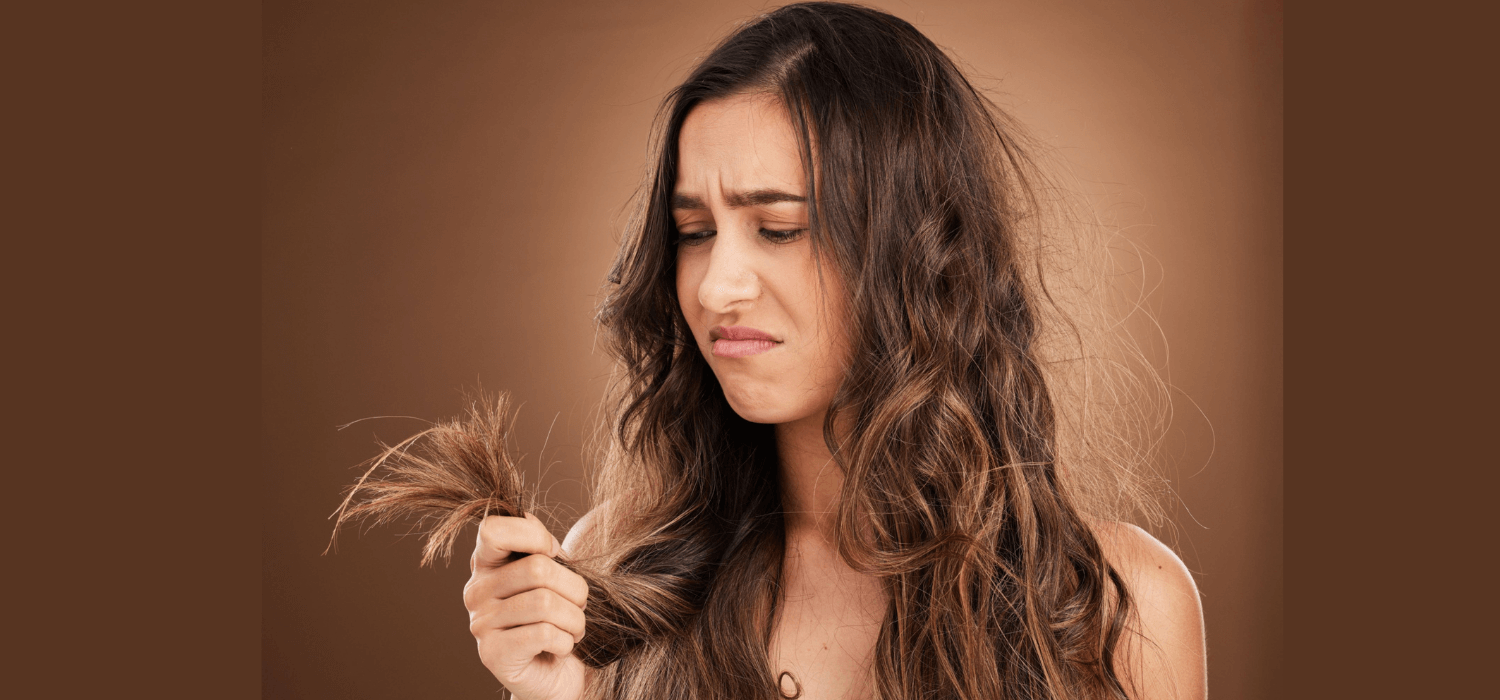How Much Hair Loss Is Normal And When Is It Worrisome?
Key Highlights
-
It is normal to experience daily hair shedding, with an average loss of 50 to 100 strands being part of the natural hair growth cycle.
-
The main causes of hair loss can range from grooming practices and stress to genetics and underlying health conditions.
-
Recognizing the signs of excessive hair loss, such as bald spots or a receding hairline, is crucial for seeking timely help.
-
Understanding the difference between temporary hair shedding and progressive hair loss helps determine treatment.
-
Various solutions for hair loss treatments are available, from lifestyle changes, supplements, to medical treatments.
Seeing a cluster of hair in your shower drain or on your brush can be unsettling. It’s easy to jump to the conclusion that you’re experiencing significant hair loss.
However, a certain amount of daily hair shedding is a completely normal part of your body's renewal process. That's why it is important to understand what’s typical for your hair growth cycle and what might signal a deeper issue.
This guide will help you distinguish between routine shedding and problematic hair loss, explore the causes, and identify potential solutions.
How Can You Tell What Counts as Normal Hair Shedding?

Your hair goes through a natural life cycle of growth, rest, and shedding. This means that losing some hair each day is an essential part of maintaining healthy hair.
This routine hair shedding ensures that old hairs are replaced by new ones, keeping your scalp full and healthy.
When you see hair on your pillow or in your comb, you are witnessing the final phase of the hair cycle. This process is continuous, with different follicles at different stages at any given time.
So, while it might seem like a lot, it is usually just a sign of a healthy, functioning scalp.
What’s Normal Hair Loss Per Day for Men And Women?

While daily shedding amounts are similar, the patterns and causes of hair loss often vary between men and women. Here’s a quick comparison.
Normal Hair Loss Per Day Female
For women, shedding patterns can vary, but here’s what’s typical:
-
Women often shed slightly more due to styling, coloring, or hormonal changes (pregnancy, menopause).
-
Healthy range: 50–100 strands per day.
-
Temporary increases may occur after major life events, but hair usually returns to normal.
Normal Hair Loss Per Day Male
For men, everyday shedding follows a similar range:
-
Men also shed around 50–100 hairs daily.
-
Shedding beyond this may indicate temporary issues or male pattern baldness.
-
New hair growth continually replaces shed strands, keeping the scalp balanced.
Explore more about Traction Alopecia: Causes and Prevention in this detailed guide.
What Actually Causes Hair to Shed And When Should You See A Professional?
While daily shedding is normal, certain factors can speed it up or signal deeper issues.
Common causes include:
-
Daily habits like over-brushing, heat styling, or harsh treatments.
-
Stress or major life changes that disrupt the growth cycle.
-
Hormonal shifts such as pregnancy, menopause, or stopping birth control.
-
Nutritional deficiencies that weaken follicles.
-
Medical conditions or medications that affect hair growth.
If shedding suddenly increases, bald spots appear, or thinning won’t stop, consult a dermatologist. They can identify whether it’s normal shedding or an underlying condition.
Doctors can test for hormonal issues, nutritional gaps, or health problems causing hair loss. If you also have scalp itching, pain, or redness, seek help quickly; these may signal inflammation that needs treatment.
Learn more about hair loss management tips if you're experiencing thinning.
How Is Hair Shedding Different From Hair Loss?
It’s important to know whether you’re experiencing normal shedding or true hair loss, since the causes and outcomes are very different:
|
Aspect |
Hair Shedding (Telogen Effluvium) |
Hair Loss (Anagen Effluvium) |
|---|---|---|
|
What Happens |
Hair growth stops due to follicle damage, which can be a cause of traction alopecia. |
Hair growth stops due to follicle damage |
|
Common Triggers |
Stress, illness, hormonal changes |
Genetics (androgenetic alopecia), autoimmune disease, treatments |
|
Follicle Health |
Follicles remain healthy |
Follicles damaged or destroyed |
|
Outcome |
Hair regrows once the trigger ends |
Can cause thinning or bald patches; may be permanent without care |
What Should You Know About the Hair Growth Cycle And What Are Its Different Phases?

Every hair on your head follows a specific growth cycle consisting of several phases that control its length and shedding. Because each follicle works independently, hairs are always at different stages, preventing all hair from falling out at once and slowing down visible hair loss.
The hair growth cycle has four main phases:
-
Anagen (Growth Phase): This is the longest phase lasting 2 to 5 years (sometimes up to 7). During this time, hair grows approximately 1 centimeter per month and about 85-90% of hairs are in this phase.
-
Catagen (Transition Phase): A brief stage lasting 2 to 3 weeks where hair growth stops, and follicles shrink. Around 1-3% of hairs are in this phase.
-
Telogen (Resting Phase): Lasting about 2 to 4 months, this is when hair rests before shedding. Approximately 8-15% of hairs are in this phase at any time.
-
Exogen (Shedding Phase): Overlapping telogen, this phase is when old hairs fall out to make room for new hairs beginning their growth in anagen.
Looking for wigs or topper options for hair loss? This ultimate guide to alopecia wigs and hair toppers has everything you need to know.
Why Book a Free Consultation at Noelle Salon?
Discover the latest in hair innovation at Noelle Salon with our new CombLine Hair Extensions, UV Light, Micro Bonds, and ICE Extension technique. This patented European method lets us add just a few extension hairs to your own strands, perfect for thinning areas like the top, sides, hairline, or bangs.
Our extensions are completely tension-free and blend seamlessly using virgin human hair, expertly matched to your color and texture to help mitigate concerns about permanent hair loss. With a wide range of shades and textures in stock, we proudly offer same-day service.
Whether you’re dealing with hair loss, damage, dryness, or overall condition concerns, our team can help. Schedule your free consultation today and experience the Noelle Salon difference.
Conclusion
Losing hair is a totally normal part of life; our strands fall out as part of the natural growth cycle, and different things like hormones can sometimes mean we shed a bit more or less each day.
It’s good to pay attention to changes, though, because things like patchy bald spots might mean there’s something else going on that needs support or advice.
If worrying about hair loss is on your mind or you just want to understand what’s happening, reaching out or having a chat with a professional is a simple way to get peace of mind and the answers you deserve.
Frequently Asked Questions
What symptoms indicate I should see a dermatologist?
You should see a dermatologist if you notice sudden hair loss, clumps of hair falling out, or developing bald spots. Other key symptoms include a rapidly receding hairline, significant gradual thinning, or any hair loss accompanied by scalp itching, redness, or pain.
Does normal hair loss differ for men and women?
While daily shedding amounts are similar, significant hair loss patterns differ. Men often experience androgenetic alopecia as a receding hairline or baldness on top. For women, female pattern hair loss typically appears as overall thinning, contributing to thinner hair and a widening part, affecting hair density without leading to complete baldness.
Is hair fall really normal in people with long hair?
Yes, normal average daily hair loss is the same regardless of hair length and thickness of your hair. However, long hair can make shedding seem more dramatic. The strands of hair are more visible in the shower drain or on a brush, and they can tangle together to look like a larger clump, even if it’s a normal amount.
Is hair loss normal during pregnancy?
Hair loss during pregnancy is less common, as higher hormone levels often keep hair in the growth phase. Some women may still notice noticeable hair loss or shedding due to stress, illness, or nutrient deficiencies. Significant loss should be discussed with a doctor.
How much hair loss is normal for a child?
Children normally shed 50–100 hairs a day, similar to adults. Temporary shedding may increase during illness, stress, or seasonal changes. Persistent thinning, bald patches, or scalp irritation should be evaluated by a pediatrician or dermatologist to rule out the most common cause of hair loss and other conditions.
How much hair loss is normal when brushing hair?
Losing about 50 to 100 hairs each day while brushing is totally normal, especially if the strands are full-length and have a small white bulb at the end, which shows they were naturally shed as part of the normal amount of hair loss.
Is hair loss normal after childbirth?
After childbirth, it’s also very common to notice extra hair loss; this is called postpartum shedding and usually happens due to hormonal changes. However, if the shedding continues, it may lead to further hair loss, but hair growth typically returns to normal within several months.
How much normal hair loss in shower should you expect?
It’s normal to see around 50-100 strands a day. Washing often loosens hairs already at the end of their growth cycle, so shedding during shampooing is totally expected and completely fine.




